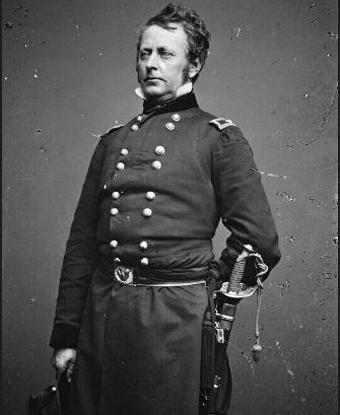Last updated: January 12, 2022
Person
Joseph Hooker

Library of Congress
From the Peninsula to Maryland: Hooker's role in the summer of 1862
During the Peninsula Campaign Joseph Hooker distinguished himself as an aggressive combat commander as he led the Second Division of the III Corps. He was particularly successful at the Battle of Williamsburg on May 5, after which he was promoted to Major General.
When McClellan's army retreated from Richmond, Samuel Heintzelman's III Corps, including Hooker's division, was transferred to John Pope's Army of Virginia.
The Northern Virginia Campaign proved to be Heintzelman's last as a corps commander. Following the Union defeat at the Second Battle of Manassas (Bull Run) Heintzelman was sent to Washington and Hooker assumed command of the III Corps of the Army of Virginia on September 6.
Even as the Confederate Army of Northern Virginia moved north into Maryland, Hooker's corps was returned to the Army of the Potomac along with the rest of the Army of Virginia and redesignated the I Corps on September 12.
On the approach to South Mountain McClellan organized the Army of the Potomac into three wings in order to attack the mountain passes. The right wing, which included Hooker's I Corps, was commanded by Ambrose Burnside and was sent to Turner's Gap and Fox's Gap in the north.
Hooker described the Battle of South Mountain in these terms: "When, the advantages of the enemy's position are considered, and his preponderating numbers, the forcing of the passage of South Mountain will be classed among the most brilliant and satisfactory achievements of this army, and its principal glory will be awarded to the First Corps."
When the army arrived at what would be the battlefield of Antietam two days later, the I Corps was sent to the far north end on the right of the Union line. After skirmishing with Confederates on the night of September 16th Hooker writes that, "The battle was soon renewed on the morning of the 17th. My object was to gain the high ground nearly three-quarters of a mile in advance of me, and which commanded the position taken by the enemy on his retreat from South Mountain"
Hooker's men led the initial assault across the cornfield, driving south into Jackson's wing of the Confederate position. For the next several hours the two armies fought each other to a standstill.
Deeply moved by what he saw that morning Hooker wrote: "Every stalk of corn in the northern and greater part of the field was cut as closely as could have been done with a knife, and the slain lay in rows precisely as they stood in their ranks a few moments before. It was never my fortune to witness a more bloody, dismal battle-field."
As he rode along the line inspiring his men to push forward, he suddenly felt faint: "I was removed from my saddle in the act of falling out of it from loss of blood, having previously been struck without my knowledge."
Hooker had been struck in the foot and was removed to the Pry House where he spent the remainder of the Battle of Antietam.
He later asserted that the battle would have been a decisive Union victory if he had managed to stay on the field, but General McClellan's caution had once again failed the Union and Lee's army continued to elude destruction.
